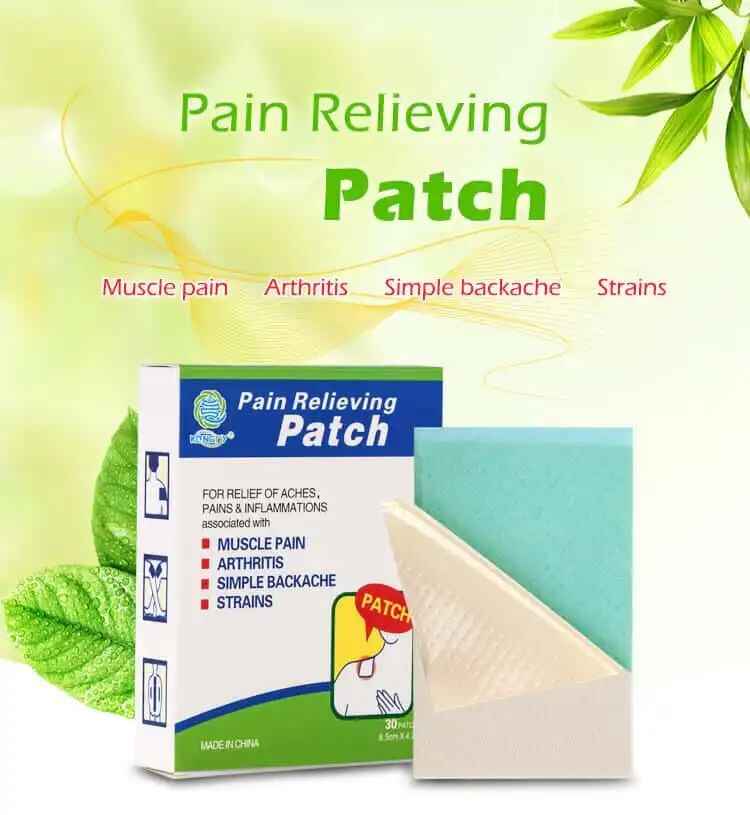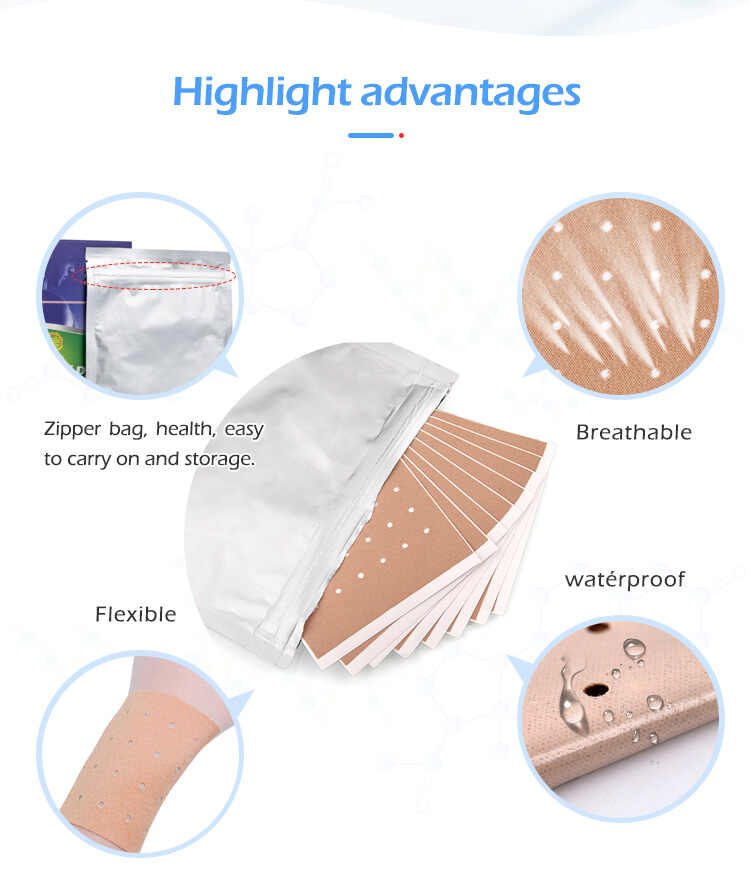How Do I Start Working with a High-Quality Inflammation Relief Patches OEM?
In today’s growing health and wellness industry, Inflammation Relief Patches are gaining popularity as a convenient, non-invasive solution for pain and inflammation management. For businesses looking to capitalize on this trend, partnering with a high-quality Inflammation Relief Patches OEM (Original Equipment Manufacturer) is the key to entering the market quickly and competitively.

But where do you start? This guide walks you through everything you need to know about working with a reputable Inflammation Relief Patches Manufacturer, from research and planning to production and launch. Whether you're launching Private Label Inflammation Relief Patches or developing Custom Inflammation Relief Patches, choosing the right Inflammation Relief Patches Supplier is essential to your brand’s success.
1. Understand the Role of an Inflammation Relief Patches OEM
An Inflammation Relief Patches OEM is a third-party manufacturer that produces products based on your specifications or under your brand name. Their role is not limited to just production—they often provide R&D support, regulatory assistance, packaging design, and supply chain management.
Why Choose an OEM Partner?
Cost-effective: You avoid investing in manufacturing facilities.
Faster time to market: OEMs have existing systems and technology in place.
Expertise: They bring years of experience and industry knowledge.
Choosing the right Inflammation Relief Patches OEM gives your business access to proven manufacturing processes while allowing you to focus on branding and sales.
2. Define Your Product Requirements
Before reaching out to any Inflammation Relief Patches Manufacturer, be clear on what kind of product you want to offer. This includes:
Ingredients: Herbal, CBD-based, capsaicin, menthol, etc.
Target audience: Athletes, seniors, general consumers
Patch type: Hydrogel, non-woven, transdermal
Packaging: Individual sachets, boxes, resealable packs
Certifications: GMP, ISO, FDA, CE depending on your target market
If you’re going for a Custom Inflammation Relief Patch, you may also need R&D capabilities from your Inflammation Relief Patches Supplier to assist with formulation.
3. Search for a Reliable Inflammation Relief Patches Manufacturer
When looking for an OEM partner, don’t just Google and go with the first result. A high-quality Inflammation Relief Patches Manufacturer should check all the boxes below:
Evaluation Criteria:
Experience and Specialization: Do they specialize in inflammation relief or medical patches?
Certifications and Compliance: Check for GMP, ISO 13485, and local regulatory certifications.
Manufacturing Capacity: Can they scale with your growth?
Client Portfolio: Have they worked with reputable brands?
R&D and Customization: Can they help with formulation or offer Custom Inflammation Relief Patches?
Platforms like Alibaba, Made-in-China, and industry trade shows are great for finding OEMs. But once shortlisted, dig deep—read reviews, request product samples, and verify their business licenses.
4. Request Product Samples and Test Quality
Before signing any agreement, it’s crucial to test the product quality. Reputable Inflammation Relief Patches Suppliers will gladly send you samples for review.
What to Look for in Samples:
Adhesion strength and skin compatibility
Effectiveness of active ingredients
Shelf life and packaging durability
User experience: Is the patch easy to apply and remove?
Testing helps ensure that the Private Label Inflammation Relief Patches you’ll sell align with your brand promise.
5. Clarify Customization and Private Label Options
When working with a high-quality Inflammation Relief Patches OEM, you’ll have options to tailor the product and brand it as your own. There are two primary paths:
A. Custom Inflammation Relief Patches
Work with the manufacturer to develop a unique formula or delivery system. Ideal if:
You have specific clinical claims
You want differentiation in a saturated market
You need a competitive edge
B. Private Label Inflammation Relief Patches
Use a pre-existing formula and brand it with your label. Best for:
Speed to market
Limited budgets
Testing product-market fit
A quality Inflammation Relief Patches Supplier should support both approaches and offer assistance with labeling, packaging, and even compliance documentation.
6. Ensure Regulatory and Legal Compliance
Inflammation Relief Patches often fall under medical devices, cosmetics, or health products depending on your region. Your Inflammation Relief Patches Manufacturer must understand and comply with relevant regulations such as:
FDA regulations (USA)
CE marking (Europe)
NMPA registration (China)
TGA requirements (Australia)
Ask your OEM about their experience in handling regulatory documentation, product registration, and export certifications. It’s also advisable to consult with a regulatory consultant.
7. Discuss Pricing, MOQs, and Lead Times
Once you’re confident in the quality and capabilities of your Inflammation Relief Patches OEM, it’s time to talk business.
Key Points to Discuss:
MOQ (Minimum Order Quantity): What’s the entry point?
Pricing tiers: Are there volume discounts?
Lead time: How long from PO to delivery?
Payment terms: 30/70, L/C, T/T, etc.
Shipping options: FOB, CIF, DDP
Always get a written quote and agreement. A good Inflammation Relief Patches Supplier will be transparent and willing to negotiate to build a long-term partnership.
8. Review the Contract and NDA
Protect your business interests with proper legal documentation. Your contract with the Inflammation Relief Patches Manufacturer should cover:
Product specifications and quality standards
Intellectual property protection
Delivery timelines and penalties
Pricing terms and payment schedule
Confidentiality (NDA)
Termination clauses
Having a lawyer review these documents can help prevent costly disputes later.
9. Start with a Pilot Order
Before going all in, start with a small pilot batch. This allows you to:
Test customer feedback
Fine-tune your marketing strategy
Validate the supply chain
Confirm the Inflammation Relief Patches OEM can meet expectations
Once everything checks out, scale up gradually based on sales and forecasts.
10. Build a Long-Term Relationship
The goal isn’t just to buy patches—it’s to build a successful, scalable business. Treat your Inflammation Relief Patches Supplier as a partner, not just a vendor.
Tips for Success:
Communicate regularly
Share forecasts early
Offer feedback on product quality and performance
Visit their facility if possible
Loyalty and collaboration often lead to better pricing, priority production slots, and even co-development of innovative Custom Inflammation Relief Patches.
Frequently Asked Questions
1. What is the difference between a Private Label and Custom Inflammation Relief Patch?
Private Label uses an existing formula under your brand name, while Custom patches are formulated specifically for your brand.
2. How can I verify if an Inflammation Relief Patches Manufacturer is certified?
Ask for documentation like GMP, ISO, and FDA/CE certificates, and verify them through official channels or audits.
3. What is the typical MOQ for Inflammation Relief Patches OEM?
MOQs vary but usually range from 1,000 to 10,000 pieces depending on customization and packaging.
4. Can I change the ingredients or patch size?
Yes, if your Inflammation Relief Patches OEM offers customization services. This is common for Custom Inflammation Relief Patches.
5. How long does it take to launch a product with an OEM?
Typically 2–4 months depending on customization, regulatory needs, and production slots.
6. What should I ask an Inflammation Relief Patches Supplier before signing?
Ask about MOQs, lead times, quality assurance, certifications, regulatory support, and customization options.
Conclusion
Working with a high-quality Inflammation Relief Patches OEM is a strategic step toward building a strong product line in the wellness space. Whether you're looking to launch Private Label Inflammation Relief Patches quickly or develop a completely Custom Inflammation Relief Patch, finding a trusted Inflammation Relief Patches Manufacturer and Supplier is the foundation of your success.
By following the steps outlined—defining your product needs, vetting suppliers, testing quality, clarifying legal terms, and nurturing long-term relationships—you’ll be well-positioned to create a powerful brand that delivers both value and relief to your customers.






